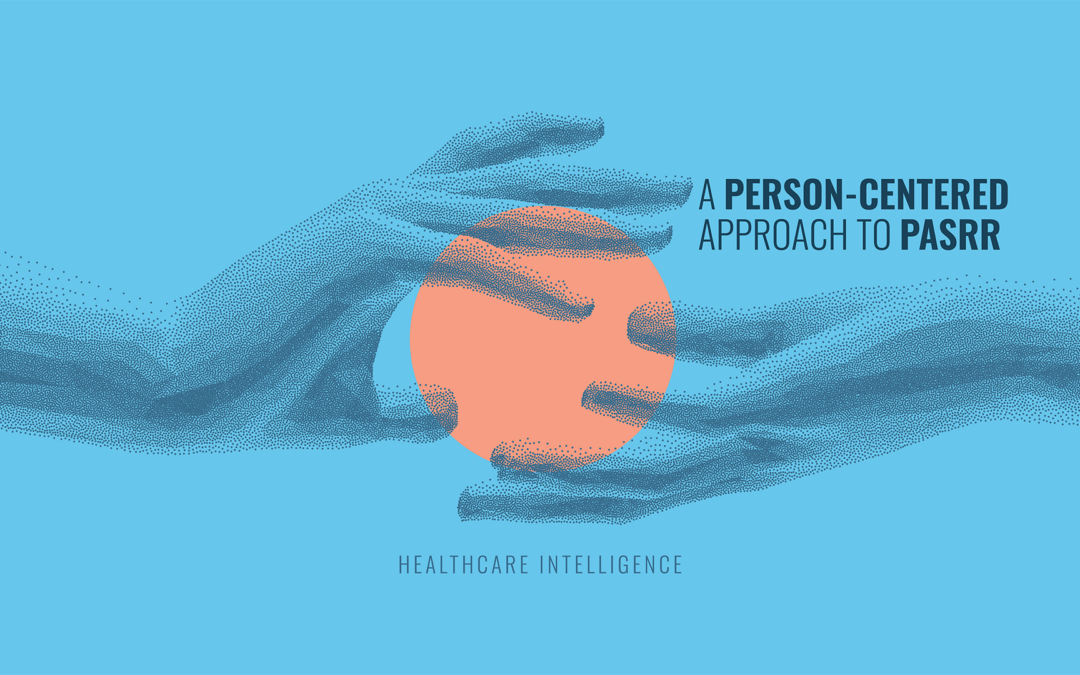 Before an individual can be admitted to a Medicaid nursing facility, they are required to receive a Level I Preadmission Screening and Resident Review (PASRR). One component of that assessment is to identify individuals who may have an intellectual, developmental disability (ID/DD) or mental illness (MI). In addition, certain responses on the Level I assessment will trigger a more in-depth Level II PASRR assessment.
Before an individual can be admitted to a Medicaid nursing facility, they are required to receive a Level I Preadmission Screening and Resident Review (PASRR). One component of that assessment is to identify individuals who may have an intellectual, developmental disability (ID/DD) or mental illness (MI). In addition, certain responses on the Level I assessment will trigger a more in-depth Level II PASRR assessment.
PASRR has three main goals: to assess whether an individual may have an MI or IDD condition, determine the least restrictive living environment to meet the individuals total care needs, and to identify any specialized services the individual might require while at a skilled nursing facility.
States are given the ability to create their own assessment tools, and while there is some variation, especially with Level I, both the Level I and II assessments must be designed to achieve the stated goals in a standardized and verifiable manner. The need for standardization makes it difficult to ensure that assessors apply a person-centered approach to their Level II assessments…difficult but not impossible.
A person-centered approach to PASRR means that clinicians and assessors prioritize individuals’ needs during this vulnerable life transition, ensuring that each individual has a say in their care, by engaging with them to confirm their current diagnoses and needs.
Going Beyond Checkbox Assessments
To achieve a true person-centered approach, it is imperative that the assessment is more than checking the boxes —it drills down into what is important to the individual and what services might meet those needs. Asking open ended questions, such as “What would make your life better here?” or “What would have to be in place to make that happen?” or “What worries you the most?” allows the individual to comment without directing them to a particular answer.
 By involving the member being assessed in a meaningful conversation about their wants and needs, Telligen assessments provide a focus that can assist facilities in identifying personalized and individualized specialized services to meet the needs of individuals that they may never have thought of before.
By involving the member being assessed in a meaningful conversation about their wants and needs, Telligen assessments provide a focus that can assist facilities in identifying personalized and individualized specialized services to meet the needs of individuals that they may never have thought of before.
The answer to how to best serve the individual may not lie in traditional services. A person-centered approach may mandate the facility to think outside the realm of what is currently being offered to meet an individual’s unique needs.
For instance, when a facility found that their resident, normally outgoing and chatty, was experiencing loneliness and, as a result, picking numbers randomly out of the phone book and calling people in their small town, they needed to help them find a way to better meet that need for socialization or friendship. The facility enlisted the help of a local group and set up a calendar so that the resident could call and talk to people on a regular basis in a way that was safer for them and allow them to have real conversations. This service geared specifically to the needs of this individual provided him with a safe and fulfilling outlet, which allowed him to grow his connections to the community.
The service or solution does not always have to be that involved or cost a great deal. The key is to use the information gleaned from the appreciative inquiry utilized during the assessment to find the best way to meet the needs of the individual based on their answers. It might be as simple as providing a Trac phone, so that someone could make a call to a loved one whenever they wanted or a special food that they would like to have on a regular basis.
Digging deeper into an individual’s wants and needs takes the assessment from merely a transaction to a partnership and recognition that while they may need support for daily living from a nursing facility, individuals still have a say and are the priority in the decision-making process. It is also a recognition that the individual is the priority and the goal is ultimately to preserve the highest level of independence and autonomy possible.

